Home » Information »
Our Child Safety Strategies
This information outlines evidence-based and intentional child protection and safety measures undertaken at Keiki Early Learning for families and caregivers. It reflects Keiki’s policies, practices, and alignment with the Education and Care Services National Law (WA), National Regulations, and the National Principles for Child Safe Organisations.
- Open Plan Environments: Rooms are carefully designed for optimal supervision, clear visibility and no blind spots.
- Secure Entry: Strictly controlled entry points including individually key coded doors (long daycare) or coded gate locks (OSHC).
- Roster Above Ratio: Services are always rostered above minimum ratio requirements to ensure robust supervision.
- Active Supervision: Educators use zoning, regular headcounts throughout the day, and visual scanning to maintain constant supervision.
- Sleep and Rest Areas: These spaces have clear viewing panels and/or open windows and are included in supervision zones.
- Nappy Changes and Toileting (long daycares): Conducted in semi-private areas that remain visible to other staff while protecting the privacy of the child.
- Structured Transitions: Indoor/outdoor transitions follow strict protocols including verbal confirmations and visual checks.
- Primary Care or Bond Building: Educators build relationships with children before taking responsibility for care routines. If an educator is new to the service or the room, the children get to know the educator before the educator is responsible for nappy changing or toileting.
- No Personal Devices: Educators must not carry personal phones; only Keiki-issued devices may be used.
- Centralised Device Management: A secure device management system helps to monitor and control usage of Keiki-issued devices, including limitations on emailing and airdrop functionality.
- Secure Digital Sharing: Learning stories/photos are shared via secure platforms with parent consent.
- Social Media: Children are only featured in social media posts with parent consent. Children’s names are never used in social media posts.
- Educator Training: All staff complete child protection and protective behaviours training at least every two years. Professional conduct guidelines are covered as part of the training and induction process.
- Mandatory Reporting: Educators are mandatory reporters in WA and trained to identify signs of abuse and concerning behaviours.
- Reportable Conduct Scheme: Staff are aware of the scheme and follow a clear internal reporting structure.
- References and Working with Children Checks: Verified at employment/onboarding and regularly validated via the WA WWCC website.
- Curriculum: Children are regularly introduced to age-appropriate Protective Behaviours concepts as part of the educational program
- Family information: Families are invited to Protective Behaviours workshops on an annual basis, run by an expert in the field.
- Internal Checks: A dedicated, internal Compliance team supports all services and conducts bi-monthly audits at all services, using a digital compliance system to provide support and monitor progress.
- External Checks: An external agency is employed by Keiki to provide monthly Quality and Compliance audits at all services.
- Regulatory Checks: Education & Care Regulatory Unit (ECRU) conducts a minimum of 2x unscheduled spot checks at each service per year.
If you have a question or would like to discuss Keiki’s child safety measures in more detail, please speak with your Centre Coordinator or email the Keiki Hub via schools@keikiearlylearning.com.au.
You can also access all of Keiki Early Learning’s policies and procedures here.


